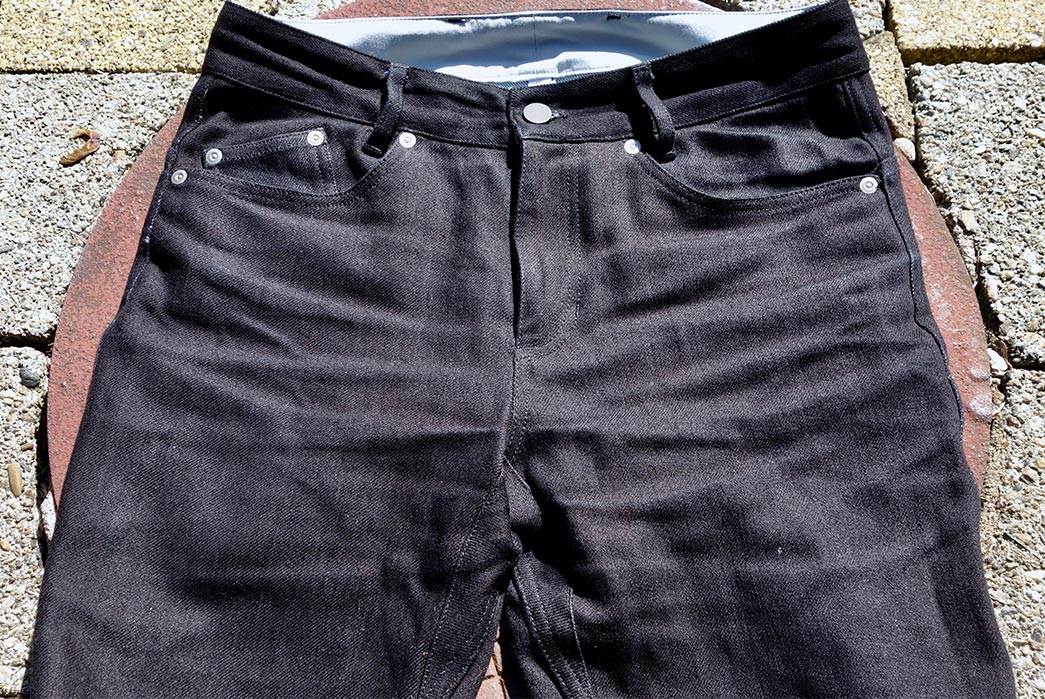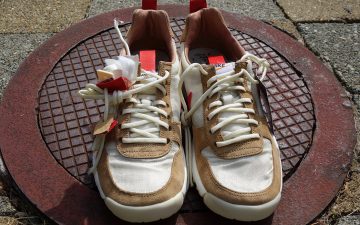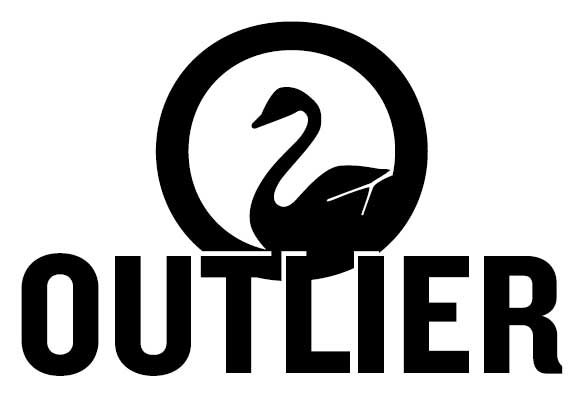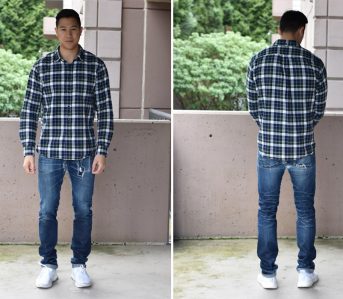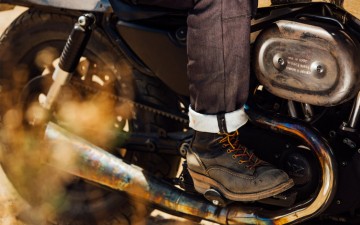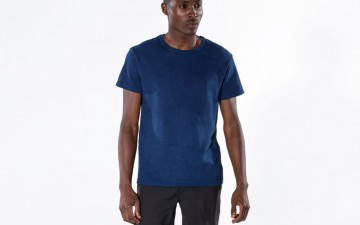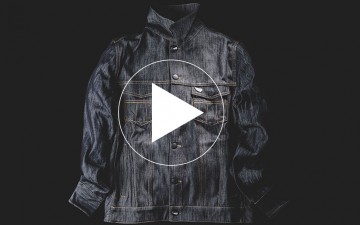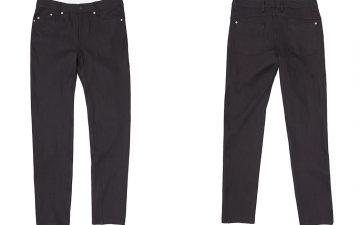Beneath the Surface is a monthly column by Robert Lim that examines the cultural side of heritage fashions.
When Outlier debuted their Slim Dungarees pants in 2011, they described them as a twenty-first century take on jeans:
“There’s no denim in here. No cotton to blowout after a month or two of cycling. No cotton to suck up sweat and rain and clam up your life for hours as it sort of dries. If Levi Strauss set out today to sell pants to gold miners, do you think he’d pick a fabric centuries old or would he do what he did 160 years ago and find the toughest, most durable and most comfortable cloth around?”
It was a powerful statement—denim and jeans are as inextricably linked as, well, the words “inextricably” and “linked.” And denim itself continues to evolve. Outlier was experimenting with versions involving ultrahigh molecular weight polyethylene (UHMWPE), also known by one of its trade names, Dyneema. Trademarked as “the world’s strongest fiber,” Dyneema is a super lightweight synthetic fiber known for its high abrasion resistance and tensile strength. You may have heard of it in one of its composited forms, used to create insanely light (and expensive) bags. But can they be used to make jeans for the twenty-first century? And what does that even mean?
Luckily, the folks at Outlier are interested in answering those kinds of questions, and their first foray into denim was the Armalith Jeans, constructed from a 14oz. stretch denim with a stretch cotton weft and a warp of black cotton wrapped around a UHMWPE core.
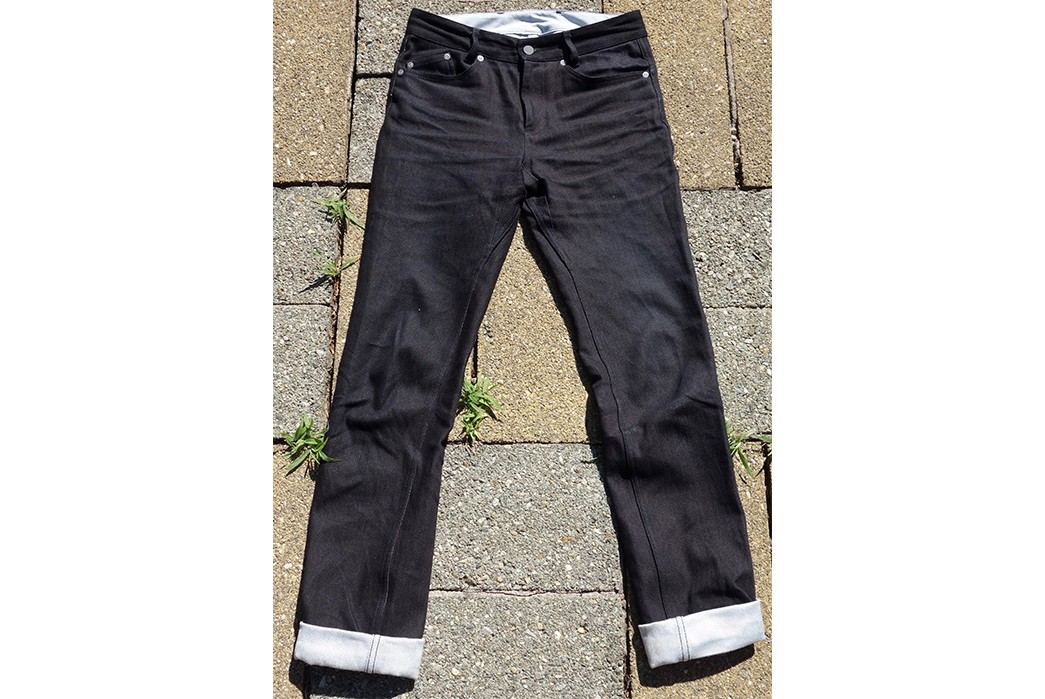
This year brings us an experimental run of an updated version, using a state-of-the-art 13oz. denim developed by Dyneema with the Berto Mill in Italy. It uses a double-warp weave to present a completely different fabric handfeel on each side: an indigo-dyed cotton outer face and a white Dyneema inner face. The weft is a charcoal grey dope-dyed Dyneema yarn, with an elastane core that provides a slight horizontal stretch. If you’re familiar with the “Unbreakable” jeans from Saint, think of it as a stretch version of that denim. The cotton warp threads are heavily dyed with “pure” indigo, to the point where they could be mistaken for a bluish black. The name of the jeans? The End of Worlds.
I’d probably compare the general fit to 3sixteen’s ST (Slim Tapered) or the Levi’s 511, although with a cut optimized for straighter hips. While the Levi’s 511 Commuter jeans are an interesting point of comparison (at least on paper), their “cycling” features are mostly an embellishment on an existing model, rather than a reinvention. For insight into how a fresh approach to cut and construction can play a huge role in functional enhancement, we can look no further than the Outlier Slim Dungarees, which is the model that the End of Worlds are based on.
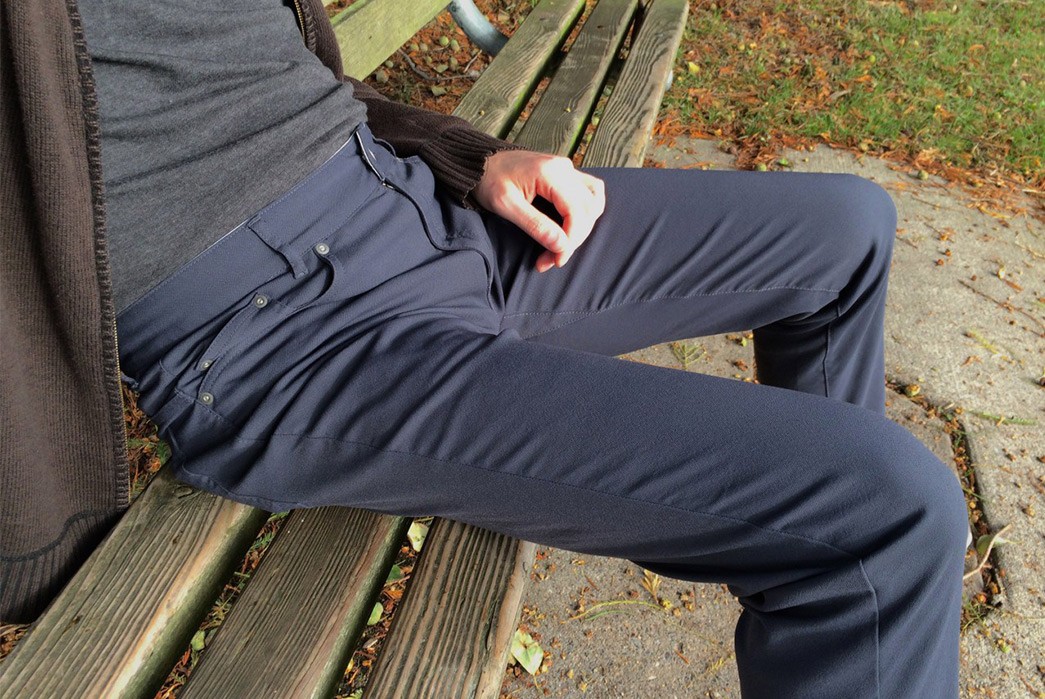
Fig. 3 – Slim Dungarees “in the wild” (via Snarky Nomad)
If you’re not familiar with the Slim Dungaree, it’s basically a slim-tapered 5 pocket “jean” cut, made from a synthetic doubleweave canvas material. It uses a mildly reversed (inverted) yoke to open up the seat across the rear of the pants while in a seated position. It also includes a crotch gusset—an innovation borrowed from climbing pants and designed to reduce stress on the crotch during certain activities, such as biking.
These details were requirements to add the desired range of motion to the Dungarees, which I believe were Outlier’s first foray into fabric that didn’t possess four-way stretch. And when applied to the End of Worlds, it makes for an exceedingly comfortable pair of jeans.
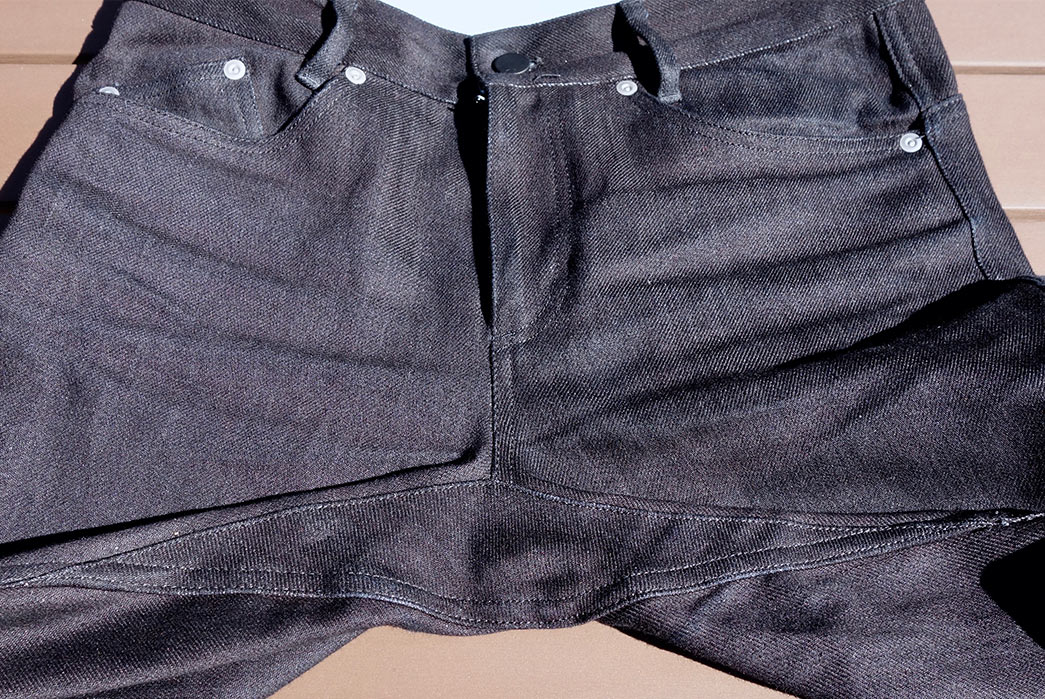
Fig. 4 – Crotch Gusset (note flat-felled seam on bottom)
Diving deeper into construction, while the Armalith jeans and Slim Dungarees both feature a classic overlock stitch on the inseams, the End of Worlds use flat-felled inner and outer seams. I asked Outlier’s Tyler Clemens about this change, and his response highlights the challenges of working with Dyneema:
“What we found is when using the overlock machine to overlock the inseam, the blade on the machine was dulling out very quickly and causing a lot of problems. These are the challenges you have when cutting most types of Dyneema, plus the material is very slippery. So we decided to try a bunch of different options, everything from binding the edges to leaving it raw (no overlock). In the end, we decided that doing a double needle flat-felled seam on the outside and inside of the leg would make for a stronger product.”
It certainly makes a lot of sense, especially considering the tensile strength of the fabric. With Dyneema running in both warp and weft, it can withstand a lot of stress—a point that Outlier demonstrated with a video of the jeans being used to hoist a 500 lb. chunk of metal scrap. But for all the advancement of the fabric, it feels like pre-washed denim, at least on the outside. The inside (being mostly exposed Dyneema) is another thing altogether.
As the product page for the End of Worlds explains:
“[Dyneema] is far more thermoconductive than any other commonly used fiber, it handles heat more like a metal than a cloth. Put it on and you’ll immediately notice the cool touch.”
That was something that took me a while to get used to; it’s not just that the fabric feels cool to the touch when you put them on, but it did so in a way that felt like it was actively cooling my skin down. And like the sensation you feel when touching a window air conditioning vent, it initially feels like the fabric’s generating coolness on its own.
In philosophical aesthetics, there’s something called the “uncanny valley,” which is a phenomenon that occurs when human replicas are rendered so realistically that it highlights their non-humanness in a way that makes us feel uneasy, giving the perception that something wrong is going on. The “valley” is the loss of affinity towards the subject as a function of realism, and the phenomenon is famously represented by the unfavorable reaction to the computer animation in the film the Polar Express.
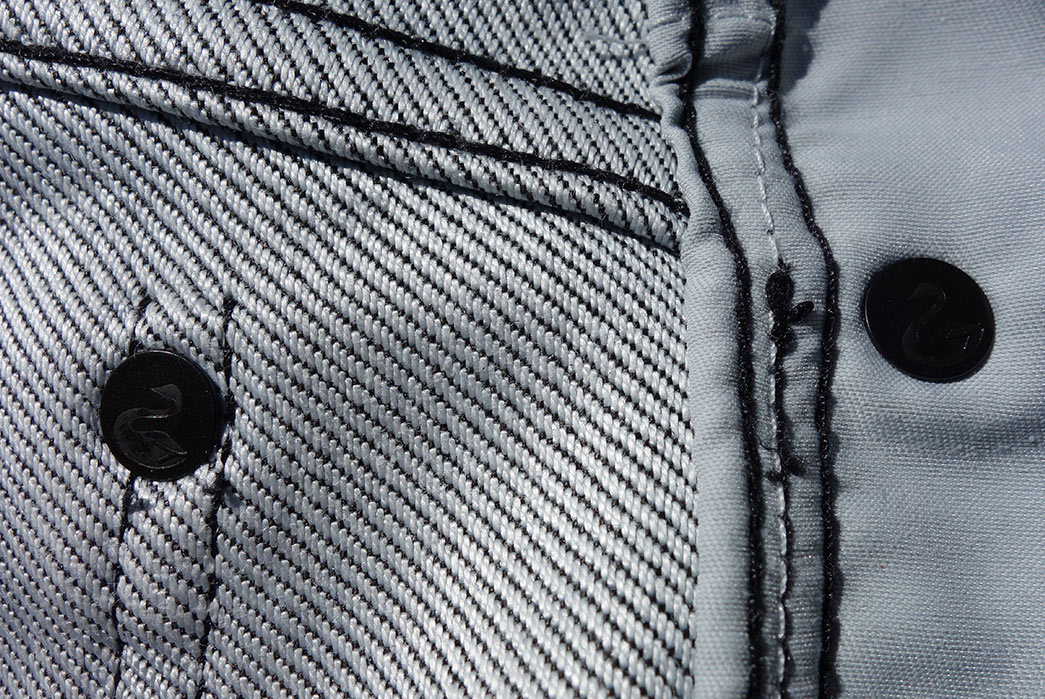
Fig. 5 – On the inside, white Dyneema (left) and Supplex pocket (right)
I had a similar reaction to the jeans the first time I put them on. They looked and felt like jeans when folded on my dresser, but felt entirely like something else on my body. Outlier’s Abe Burmeister put it well on the Outlier subreddit—“it feels alien, not like anything else you’ve worn.” And given their thermal conductivity, I expected them to feel uncomfortable outside a narrow band of temperature ranges. But I got used to the feel, and how they responded to temperature. Even driving in a car with direct sunlight on my lap wasn’t a problem—there’s not enough weight to press the inner face of the fabric against your legs.
That said, I wouldn’t recommend sitting in direct sunlight for extended periods of times, and they weren’t that comfortable when I was at a crowded show in an industrial space for a concert on a humid summer night in Brooklyn. It’s not a knock—with a Dyneema inner face, they weren’t designed to be good at that—but it is worth noting, considering they came from a brand who has marketed moisture management as a core tenet in their lineup of pants. Take it as a trade-off, if you will.
That Dyneema inner face does present a slight bonus: it protects your shoes from crocking-related denim stains while cuffed (although you might learn, as I do, that you ever so slightly sit on the heels of your sneakers when tying them). And yes, these crock like a mother. I don’t see any need to soak them before wearing, since they’re soft to begin with, but I suppose if you wanted to bleed off indigo, you could. While they will inevitably fade (as will the dope-dyed Dyneema weft, apparently—and intriguingly), I don’t expect them to do so quickly, nor produce the high contrast fades that gain you legend status in Fade of the Day.
For one thing, the cotton threads for these were heavily dyed, so the indigo has probably well-penetrated the core. Also, high contrast fades tend to come with the creases from folding, which get set from repeated motions. I’m seeing a little of that happening, but in my experience, softer denim and (in particular) stretch denim tend to mitigate those effects, as demonstrated in this Fade of the Day. Time will tell, I suppose, but I’ll try to post an update here if I’m able to.
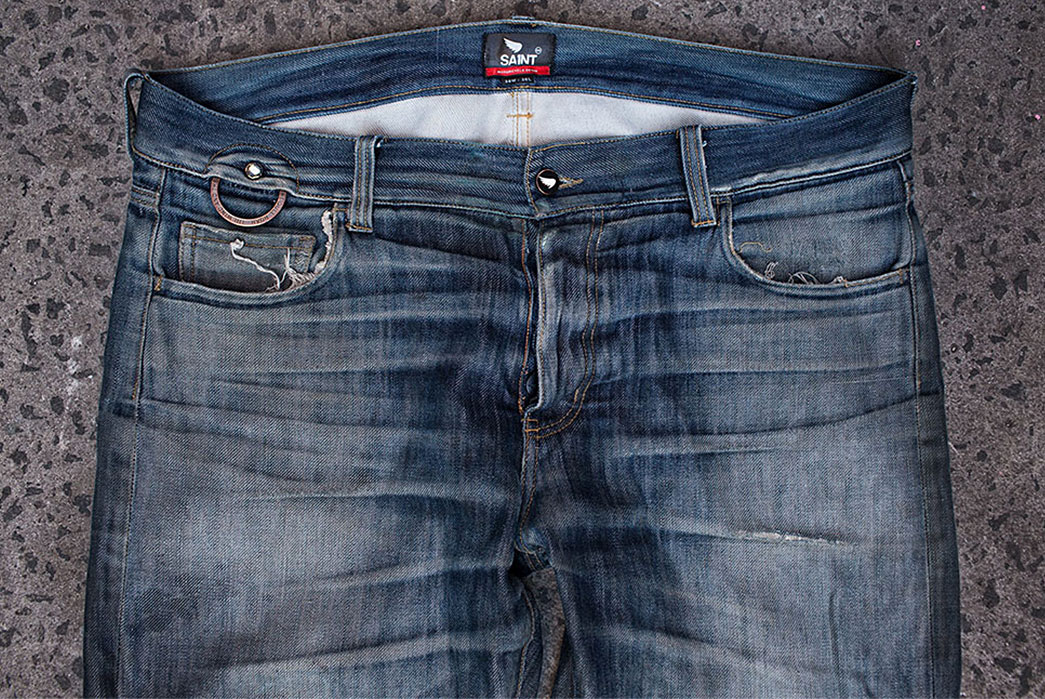
Speaking of Fade of the Day, Saint co-founder Mike Lelliott sent us photos of his pair of Unbreakables last year. What I found most striking about his pictures is what appears to be a small tear in one of the thighs—it’s as if the denim started to “break” after repeated bending. It suggests that Dyneema, with all its strengths, might be vulnerable (or make its fabric vulnerable) to folding fatigue, kind of like what happens with a paper clip if you bend it and then bend it back. (Or perhaps there’s a more complicated story involving, say, knives. As I said, time will tell.)
Because of their soft handfeel out of the gate, these jeans are unlikely to appeal to those who really like crunchy, rigid denim, or denim that has tons of character from imperfections. The feeling a pre-soaked pair of jeans made from starched, loomstate denim is one that’s hard to replicate—more akin to thick, corrugated cardboard, they feel durable beyond compare. I wonder if that psychology carries over to the jeans once they’ve worn in, when they feel like they’ve molded to your body. They’re tough initially, and when we break them in, perhaps we feel that toughness accrues to us for having conquered them.
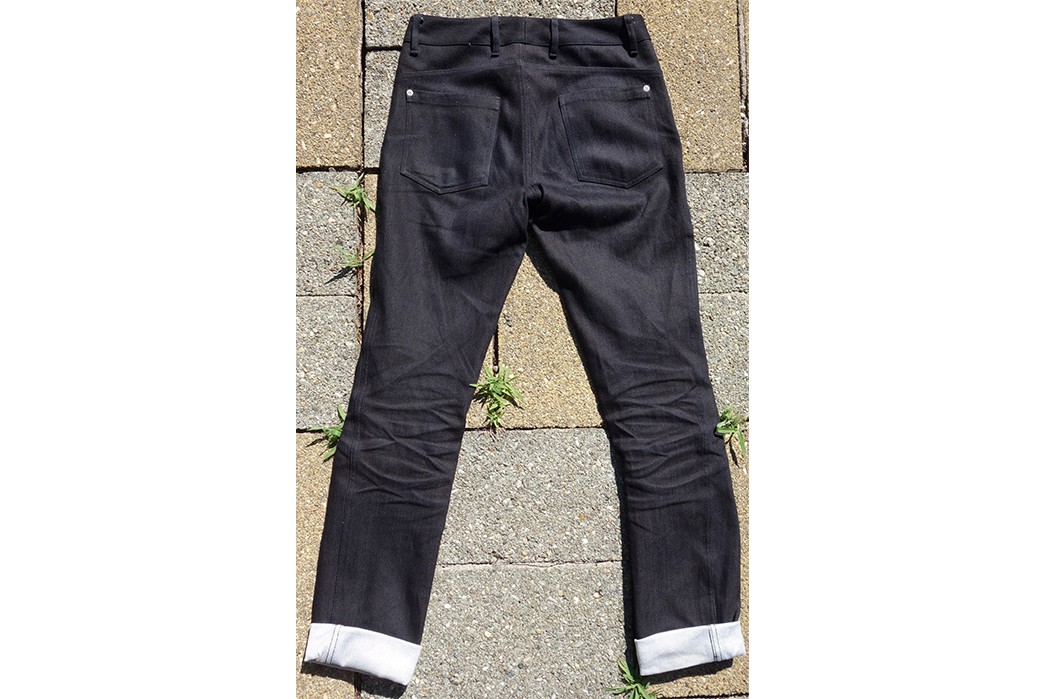
Fig. 7 – End of Worlds (back view)
When Amy Leverton wrote a (great) piece on the commercial trend of stretch denim, the response from certain denim enthusiasts highlighted this seeming contradiction. A vocal portion of the community preferred their vintage-style denim as both more durable and more comfortable. And interestingly, there seemed to be a feeling that the stretch was compromising the durability of the denim, with one reader hinting that the stretch would eventually “wear out.” The argument seemed to go: if raw denim is tough and needs to be broken in, stretch denim is inherently compromised.
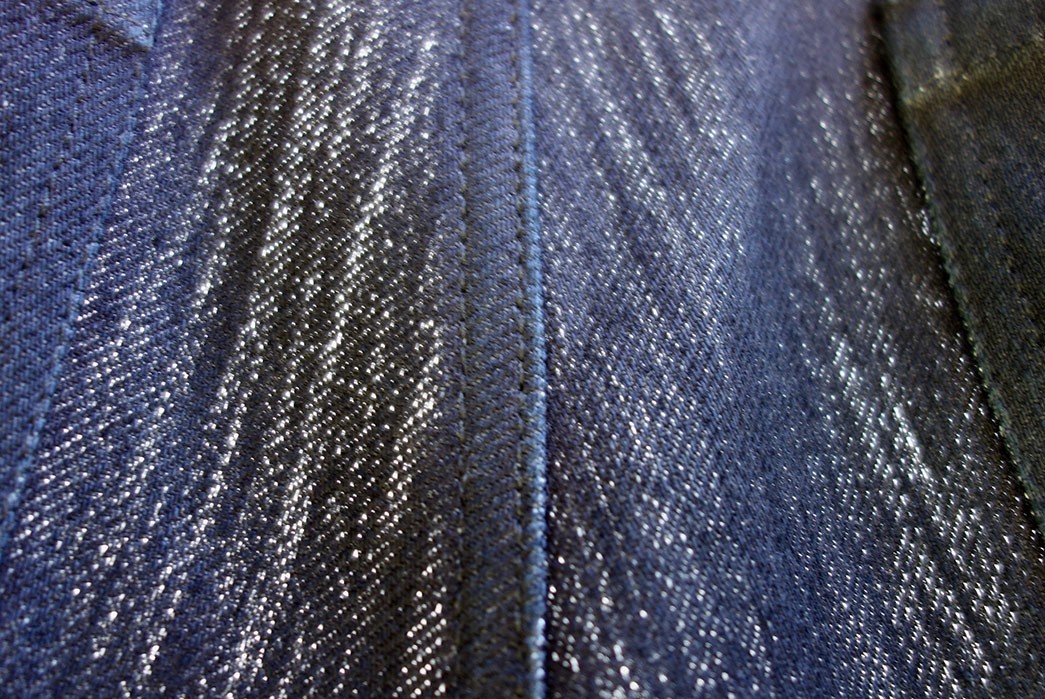
Fig. 8 – 21st Century Trompe l’Oeil – The End of Worlds viewed against direct sunlight
The End of Worlds, concealing a hidden strength and offering themselves so comfortably to our bodies, are an interesting counter to this line of reasoning. With a look of classic denim, story of weapons-grade durability, and a highly engineered cut that incorporates a bit of stretch, Outlier has hit that unique combination of modernity, tradition, comfort and strength that jeans can represent, and have done so in a way that hits home for where we are in this 21st Century.

